Spreading phlox: description, varieties, planting and care

Among the many plants that are found in modern flower beds, the simple, but at the same time, charming phlox does not stand out much. But this does not mean that they are not worthy of attention - on the contrary, such a plant definitely deserves a place on any site. They are unpretentious and do not require special care. At the same time, such flowers look very beautiful and are combined with most summer flowers.

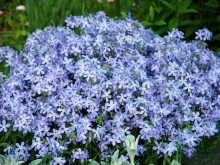

Peculiarities
The description of this flower looks very simple. The splayed phlox reaches a height of no more than 40 centimeters. However, there are also lower plants. The stem is dark green. Their leaves are small in size, moreover, they are ovoid. Their length is equal to 3-4 centimeters.
The classic color of the splayed phlox is blue or lavender. Flowers of white, lilac or pink color are a little less common. These phloxes differ from their counterparts not only in shade. They have wider petals that taper neatly towards the center of the flower.
This plant begins to bloom in mid-May and can last until the end of July. Phlox are great for making bouquets. They can be combined with a wide variety of flowers and evergreens.



Varieties
In their natural environment, splayed phlox grow in the meadows of North America. but experts did their best and brought out a large number of varieties of this beautiful plant that can take root in almost any corner of the earth.
Chattahoochee
It is a perennial plant, which is a short bush. The leaves of such a phlox are very thick, with slightly raised brushes. The flowers are lavender.
This variety is so good that it even received an award from the Royal Horticultural Society of Great Britain.
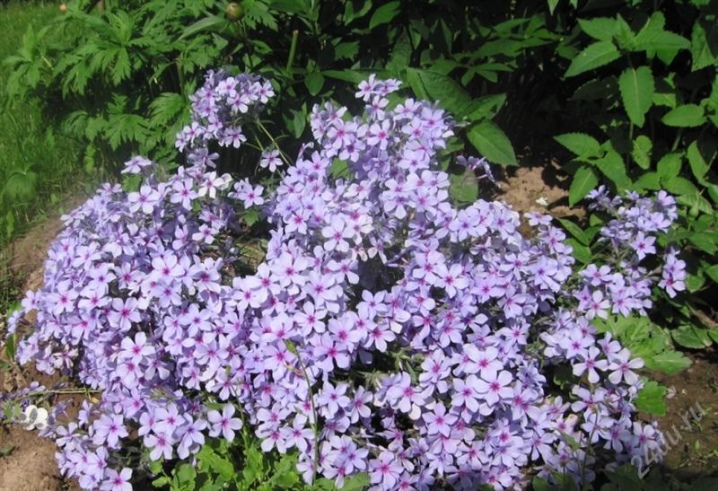
"Blue moon"
These phloxes are the lowest. The height of the bush does not exceed 20 centimeters. The flowers are blue-lilac; their diameter does not exceed 4 millimeters. Flowering begins in late May and lasts about a month. But if the bush grows in partial shade, it will last a little longer.

"White perfume"
This variety is a beautiful low-growing plant with dense white flowers. Several flowers can form on one stem at once, the diameter of which does not exceed two centimeters. The height of the bush is 35-40 centimeters. If you plant these phloxes in several rows, then a beautiful white carpet will look as luxurious as possible.
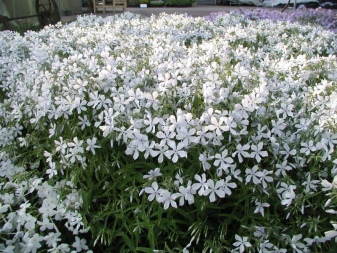

Clouds of Perfume
Such a plant is very often used to create rockeries. The bushes are low, up to 25 centimeters in size. The flowers are quite fragrant; always delight with their pale blue color. Their diameter does not exceed two centimeters.

Despite all their differences, the varieties listed above are equally well suited for decorating any site.
How to plant?
Planting phloxes in open ground is, in any case, a very responsible job. First you need to start choosing a place. It should be well lit. In extreme cases, partial shade is also suitable. But such plants cannot be planted completely in the shade, because they will become faded and small. Spring is considered the most favorable month for planting these flowers - during this period phloxes will be able to take root best of all. This can be done in the fall, but no later than the beginning of September.
Planting should be done on a cloudy day or in the evening. The width between the bushes should be at least 40 centimeters. The hole must be well watered and only after the water is completely absorbed, can planting be carried out. If the bush is quite adult, then the roots should be shortened to 10 centimeters.
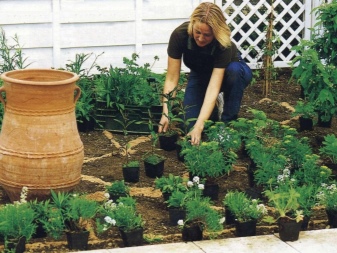

How to take care of it properly?
Even the laziest people can take care of phlox - the plants do not require too much attention. The main thing is timely watering. Since the culture has a shallow root system, it needs to be watered regularly, but not too zealous at the same time. There should not be too much moisture; from its excess, the roots can even rot.
Besides, from time to time, the soil around the bush must be weeded... This is necessary not only to keep the site looking neat, but also to remove weeds so that they do not drain the land. In the event that the weeding has not been done for too long, the weeds must be removed very carefully. After all, if you do it inaccurately, you can damage the roots of the flower itself.



Another important point is feeding. Fertilizers allow you to make the bush more hardy and increase the number of flowers on it. You can apply top dressing throughout the season, using both mineral and organic fertilizers.
For example, at the end of May, you can feed phlox with a liquid solution of chicken manure. The ratio should be as follows: 25 grams of droppings per bucket of water. You can repeat feeding only after 2 weeks. However, this time potassium salt must also be added to the solution.
The next time, fertilizer is applied only in July. For this, use a conventional solution. The last feeding comes at the end of flowering. At this time, it is worth using a solution of potassium salt and fluoride.
You should not apply any nitrogen-containing fertilizers at this time, as they contribute to the growth of green mass, which will be superfluous in winter.


Some novice gardeners believe that pruning phlox is not necessary at all. However, this judgment is incorrect. This must be done in order to protect the bush from the appearance of pests or various diseases. It is best to prune the plant immediately after flowering or at the end of summer. Experts recommend pruning the lower branches without affecting the upper ones.
In regions where winters are too cold, the bushes need to be well covered. If this is not done, then phloxes can freeze out. Dry peat, sawdust or dry fallen leaves can be used as a covering material. It is advisable to mulch the plant after treating the bush with insecticides.


Reproduction methods
There are several options for the reproduction of phlox. You need to familiarize yourself with all in more detail.
By dividing the bush
The splayed phlox grows very quickly, therefore gardeners use this method of reproduction most often. To do this, it is enough to dig out a bush, divide it into several parts, and then plant them in holes prepared in advance. For the first few days, it is necessary to ensure regular watering for all the cuttings.

Seeds
Not everyone can propagate phlox in this way. But if you do everything carefully, then it is quite possible to achieve success. However, it is worth considering that this method of reproduction can lead to the loss of varietal characteristics.
You can sow seeds either in open ground or in pre-prepared containers. The second method is more effective - in greenhouse conditions, you can get much more seedlings. A special substrate is used for planting seeds. It should include peat, dry deciduous humus, and fine sand, taken in equal parts.
It is necessary to sow seeds in early spring to a depth of two centimeters. When the first shoots appear, you need to water them daily. Already at the beginning of May, you can plant ready-made seedlings in open ground.


Cuttings
Cuttings are best harvested in early May. At this time, the stems have already gained juice and are full of strength.It is enough to cut off the sprout with a sharp knife, and then divide it into two parts so that there are two nodes on each. After that, the prepared cuttings must be planted in pre-prepared and slightly moistened soil.
From above, an impromptu "bed" must be covered with foil or glass. This is necessary in order to create a greenhouse environment. Literally in a month, the cuttings will get stronger and form a full-fledged root system.

Diseases and pests
Despite the fact that such phlox are unassuming, and actually grow by themselves, sometimes you have to save them from various diseases. Here are the most common ones.
- Variegatedness. It appears during the flowering period of the plant. Light stripes begin to appear on the petals. In this case, the plant must be dug up and then burned until the rest of the bushes are infected.
- Powdery mildew. This disease most often appears due to high humidity. To combat it, it is worth using any fungicides, for example, "Topaz" or a solution of furacilin.
- Rust - Another unpleasant disease that manifests itself in the form of brown spots. Subsequently, they spread to all leaves. A little later, they completely crumble. As a prevention of such a disease, you can use Bordeaux mixture.


And there are also a large number of pests that phlox may like. First of all, it is worth noting nematodes - small parasitic worms that feed on the sap of this plant. One nematode can lay more than 100 eggs. With their appearance, the bush must be dug up and burned along with the eggs of dangerous worms.
Besides, phlox are very fond of slugs, snails or ordinary caterpillars... They are especially dangerous during the growth of young shoots. If these are caterpillars, and they have just appeared, they can be collected by hand. If time has been lost, it is worth using special preparations that are sold in any appropriate store to fight. Snails or slugs can be fought with traps set on leaves or under a bush.
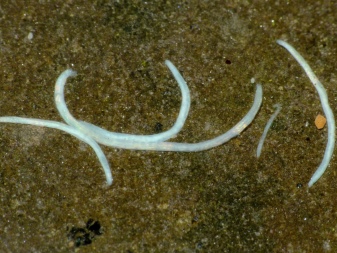

Use in landscape design
Spread phlox is a rather beautiful plant that is very often used in landscape design, and not only to decorate garden paths. Phloxes are often planted in flower beds or in the garden.

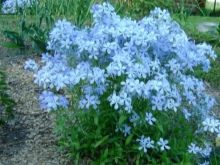

They are often planted next to conifers. In this case, they look very good against a green background.
You can successfully combine phlox with astrantia, and with incense, and with variegated zipper. In addition, you can plant several varieties of phlox at the same time. Moreover, their shades can be very diverse.



Summing up, we can say that the splayed phlox is perfect for growing on any personal plot. And if you provide the flowers with proper care, they will be able to delight their owners with the incredible beauty throughout the summer.
For more information on this phlox, see the next video.







































































































The comment was sent successfully.